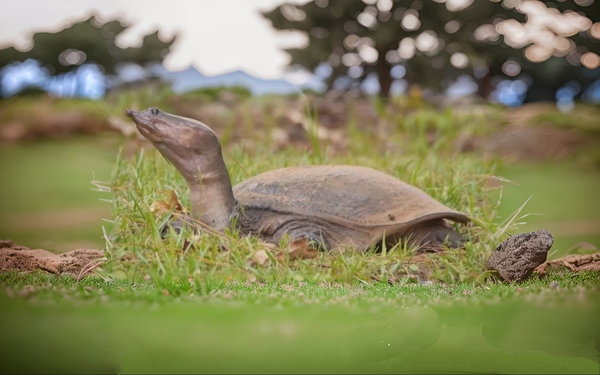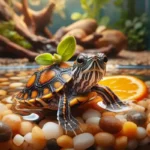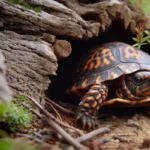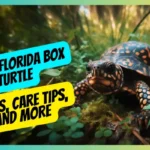Welcome to the world of Florida Softshell Turtles, an incredible and unique reptile found in the Sunshine State.
These amazing creatures have a distinct leathery shell that helps them blend into their environment like no other creature can!
Not only are they one of the most popular species among herpetologists, but they also offer hours of entertainment for us all with their curious behaviors.
From observing mating rituals to tracking migrations, these reptiles will excite your senses in ways you never thought possible.
So, let’s dive in and learn more about this amazing reptile!
Physical Features and Appearance
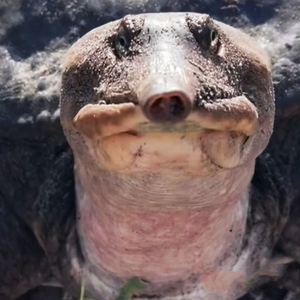
The Florida Softshell Turtle is quite a sight to behold, thanks to its unique features:
- Flat, pancake-like shell
- Leathery and flexible carapace
- Long necks and elongated, snorkel-like snouts
Adult females can grow up to 24 inches in length, while males are smaller, reaching only about 12 inches. The coloration of these turtles varies from dark brown to olive green, often with a mottled or spotted pattern.
Habitat and Distribution
The Florida Softshell Turtle is native to the Southeastern United States.
Their range extends from South Carolina to Florida and west to eastern Texas.
They can be located in different freshwater habitats, including:
- Ponds
- Lakes
- Rivers
- Swamps
These turtles prefer slow-moving or still waters with a soft, muddy bottom and plenty of aquatic vegetation.
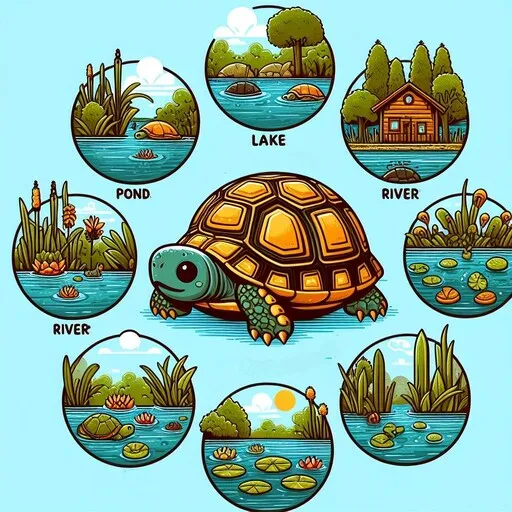
They are known to bask in the sun on logs or rocks but are also quite elusive, spending much of their time hiding in the water or buried in the mud.

Diet and Feeding Habits
Florida Softshell Turtles are carnivorous and have a diverse diet that includes:
- Fish
- Crustaceans
- Insects
- Amphibians
- Small birds and mammals
They are ambush predators, meaning they lie in wait for their prey to come close before striking with lightning speed.
Their powerful jaws and sharp beaks allow them to easily crush and consume their prey.
These turtles have also been known to scavenge on dead animals, making them opportunistic feeders.
Behavior and Lifestyle
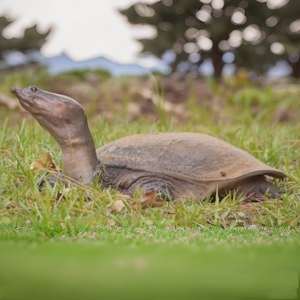
Key aspects of the Florida Softshell Turtle’s behavior and lifestyle include:
- Social interactions and communication
- Reproduction and nesting habits
- Survival tactics and predators
These turtles are generally solitary creatures but can occasionally be found basking together in groups. They are known to be aggressive, especially when they feel threatened or cornered.
Florida Softshell Turtles have a unique hissing sound that they use to communicate with other turtles and warn off potential threats.
Reproduction and Nesting
The mating season occurs in the spring, with females laying their eggs between April and July.
Females can lay up to 30 eggs at a time, burying them in a shallow nest near the water’s edge. The eggs incubate for about 10 weeks before hatching.
Interestingly, the sex of the hatchlings is determined by the temperature during incubation, with warmer temperatures producing more females and cooler temperatures resulting in more males.
Once hatched, the young turtles are left to fend for themselves and face numerous predators, including raccoons, birds, and even other turtles.
Survival Tactics and Predators
To evade predators, Florida Softshell Turtles rely on their speed, agility, and camouflage.
Their flat shells and mottled coloration help them blend in with their surroundings, while their flexible bodies allow them to quickly retreat into the water when threatened.
In addition to their natural defenses, their aggressive nature and powerful bite can deter potential predators.
However, they still face a variety of predators, including alligators, raccoons, and birds of prey.
Hatchlings are particularly vulnerable and have a high mortality rate due to predation.
Role in the Ecosystem
The Florida Softshell Turtle plays a vital role in maintaining the health and balance of its aquatic habitats.
They contribute to the environment by:
- Controlling the populations of their prey species
- Maintaining water quality by consuming dead plants and animals
Currently, the Florida Softshell Turtle is not considered endangered or threatened, but like many other turtle species, it faces challenges due to habitat loss, pollution, and human activity.
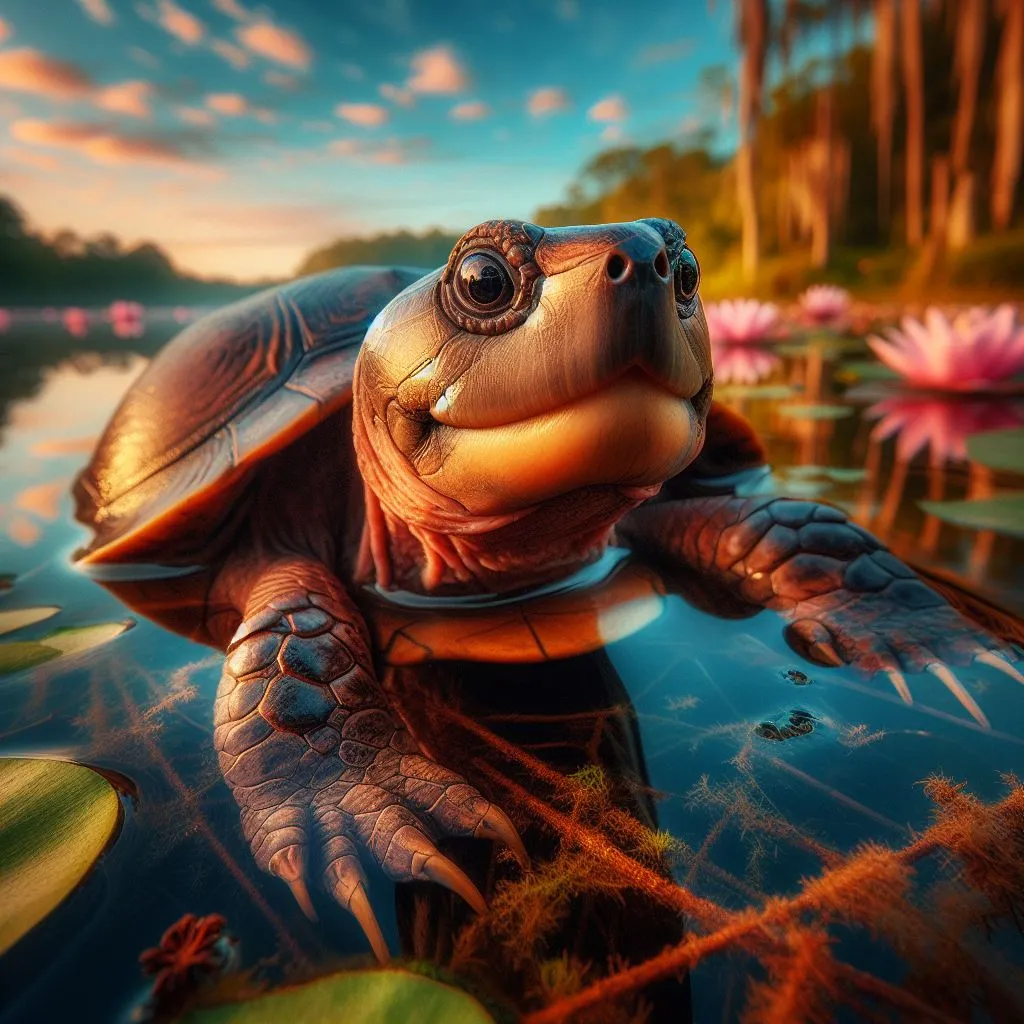
Road mortality is a significant threat, as these turtles often cross roads to find suitable nesting sites.
Additionally, the pet trade has led to the capture and sale of many Florida Softshell Turtles, which can negatively impact wild populations.
Conservation efforts should focus on protecting and preserving their natural habitats, as well as educating the public about the importance of these unique reptiles.
Tips for Encountering Florida Softshell Turtles in the Wild
If you’re hoping to catch a glimpse of a Florida Softshell Turtle in the wild, follow these tips:
- Where to spot them: Visit slow-moving or still freshwater habitats like ponds, lakes, and swamps, especially those with plenty of aquatic vegetation.
- Early morning or late afternoon are the best times to spot these elusive Florida turtle species, as they are more likely to be basking in the sun or foraging for food.
- Safety and etiquette: Maintain a safe distance and avoid disturbing their habitat.
- Keep in mind that these turtles can be aggressive and have a powerful bite, so never attempt to handle or approach them too closely.
- Respect their natural environment by not littering or disrupting their habitat in any way.
Conclusion
The Florida Softshell Turtle is an intriguing and captivating species that deserves our appreciation and protection.
By learning more about their unique characteristics, behavior, and role in the ecosystem, we can better understand the importance of these remarkable reptiles and work to preserve their habitats for future generations to enjoy.
So, next time you’re exploring the waterways of the Sunshine State, keep an eye out for the fascinating Florida Softshell Turtle!
